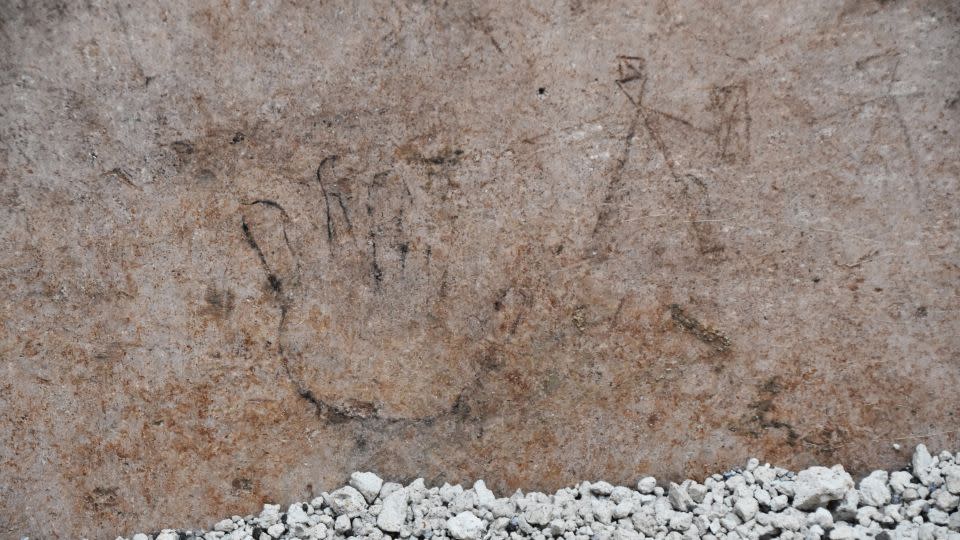Pompeii gladiator drawings suggest children saw ‘extreme form’ of violence
Children’s sketches depicting violent scenes of gladiators and hunters battling animals have been uncovered at the archaeological park of Pompeii, the park’s superintendent has said.
The drawings, thought to be made by children between the ages of five and seven sometime before Mt. Vesuvius erupted in 79 AD, were found on the walls of a back room in the residential sector of the archaeological park.
They show that even children in ancient times were exposed to extreme violence.
“It does not seem to be a problem only of today, between video games and social media,” superintendent Gabriel Zuchtriegel said in a statement about the latest discovery.
“The difference is that, in ancient times, the bloodshed in the arena was real and that few saw it as a problem with all the possible repercussions on the psycho-mental development of Pompeian children.”

As of Tuesday, visitors to the park can see the drawings from suspended walkways above the excavation site as archaeologists continue to work there.
The drawings depict a fight scene with two gladiators, spears in hand, facing what is likely to have been intended to be wild boars. Nearby lies the head of a bird of prey archaeologists say could have been an eagle.
There is also a boxing scene with both boxers appearing to be lying on the ground in a “knock-out,” according to the park’s description of the discovery.
Other drawings include a child’s outlined hands made with charcoal and figures playing with a ball.
An even older drawing on an adjacent wall was presumably made by an older child, with the use of a red mineral pigment rather than charcoal, but it was partially covered in whitewash, suggesting the room was being repainted to cover up the drawings on the walls, archaeologists said.
The older painting depicts a more sophisticated marine scene with two ships surrounded by fantastical fish, one of which was caught on a hook.

Children likely witnessed violence
Pompeii park has started a collaboration with the Department of Child Neuropsychiatry at Naples’ Federico II University to study the children’s art.
So far, they have determined that the drawings likely came from “direct vision” of an event rather than from pictorial models.
“Probably one or more of the children who played in this courtyard, among the kitchens, latrine and flowerbeds for growing vegetables, had witnessed fights in the amphitheater, thus coming into contact with an extreme form of spectacularized violence, which could also include executions of criminals and slaves,” Zuchtriegel said.
“The drawings show us the impact of this on the imagination of a young boy or girl, subject to the same developmental stages that are still found today.”
In addition to the drawings, archaeologists uncovered the petrified remains of a man and a woman who perished when the volcano erupted, capturing the ancient Roman city of Pompeii in a time capsule that was first discovered in the 16th century.
The presumed couple were found in front of a home that was undergoing renovation, based on construction materials found on site.
Archaeologists also discovered a painting of a small child wearing a hood that they say is “without comparison” in Pompeii, perhaps a homage to a deceased child, according to the park. The child was surrounded by bunches of grapes and pomegranates and a tiny dog and seemed to be looking out into the garden near where the other children’s drawings were found.
The ongoing excavations are part of an extensive plan to save the ancient site from collapse after years of neglect.
Previous discoveries have included a prison bakery and a lavish dining room with mythological figures on the walls.
For more CNN news and newsletters create an account at CNN.com


